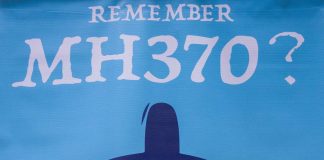MAY 28, 2019

The strict stance adopted by the US government on the H-1B visa policy would put the profit margins of Indian information technology (IT) services companies at risk in the current financial year, as staff onsite costs continue to rise.
An increase in employee costs can be attributed to tightening of visa norms for Indian players, resulting in higher onsite costs for them. Ever since the US government tightened its H-1B visa policy in 2017, challenges have mounted for the sector, according to ratings firm Crisil.
“Employee expenses which account for nearly 60-65% of total operating costs and cost per employee for Tier 1 players rose faster at about 17% and around 9% on-year in fiscal 2019, respectively, compared with nearly 6% and about 3% a year before,” analysts at Crisil noted.
Tier 1 players like Tata Consultancy Services, Infosys, HCL Technologies and Wipro added more than 82,000 employees in fiscal 2019, compared with only 10,000 employees in entire fiscal 2018, which is the highest in past five fiscals.
The increase in cost per employee can be attributed to the rising number of onsite local hires and higher (about 2x) salaries of employees with digital skills, as the wage hike was only in the range of 6-8% for the employees for the period. “Employee cost has been trending up for the past eight quarters even though employee addition was muted during fiscal 2018, which can be on account of higher onsite costs for players,” they said.
For mid-tier players, the increase in employee expenses was around 13% on-year for nine months ended December of FY19 as many are yet to declare fourth quarter results.
Margins have been declining structurally for the past five fiscals, as billing rates and utilisation stabilise. The rising employee costs are expected to add to the pressure further. “Employee utilisation was high at about 85% in fiscal 2019, with only a marginal room for improvement in the future. Billing rates are expected to remain under pressure, as traditional services become commoditised,” the report said.
While the revenues are expected to grow by 7-8% in dollar terms for the sector in FY20, helped by a double-digit growth in digital services. Operating margin is forecast to decline 30-80 basis points for the sector in FY20 as local hires increase for onsite job, who cost 25-30% more than their H1-B counterparts.
While, traditionally, the sector has relied on labour arbitrage for maintaining margins, the gap has been narrowing owing to various market forces — mainly changing the US policy stance towards H-1B visas.
In 2017, Indian-origin employees were the largest consumers of H-1B visas at 63% of initial employment, so the sudden change meant fulfilling onsite client requirements became tough.
Indian IT players have had an offsite-onsite employee ratio of 80:20. Employees with H-1B visas have been at the core of their strategy, given that they cost nearly 20% cheaper than the US-based employees, said Crisil. Further, the unemployment rate in the US technology sector was only 1.8-2% in calendar 2018, compared with an overall unemployment rate of 3.8-4%. So, the limited staff availability is expected to lead to higher employee costs associated with hiring US locals.
The ratings firm recommends that companies could try to optimize onsite costs by resorting to hiring college graduates at $50,000-60,000 in a higher proportion and the rest be filled with a few domain experts at a higher cost, fewer onsite bench resources, and keeping variable salaries depending on the outcome of projects. “Focus on moving up the value chain in digital services could also play a role to offset the rising employee cost,” they said.
Courtesy: The Financial Express









































































































